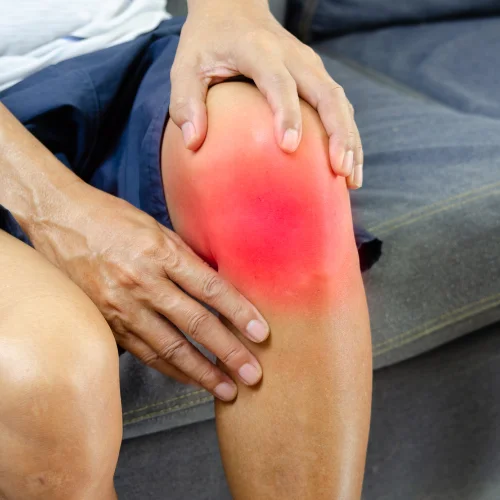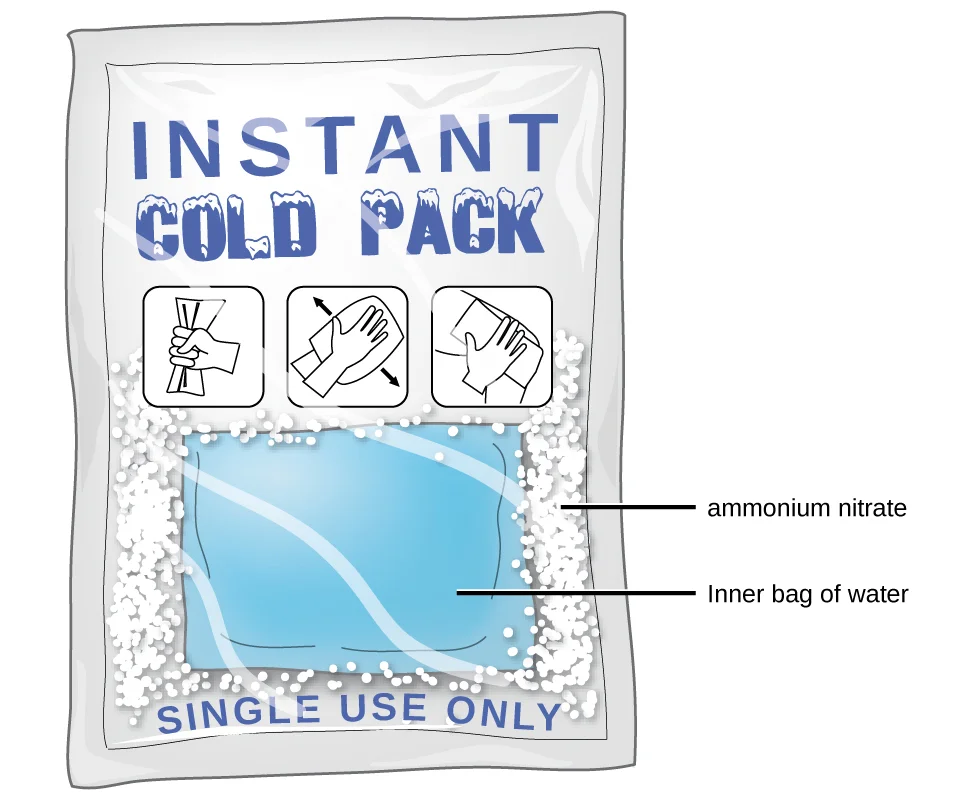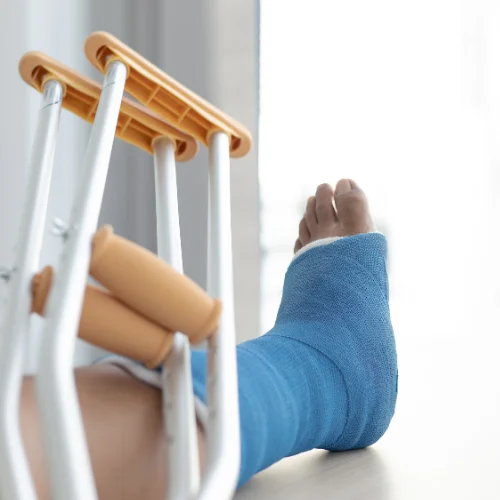How to Apply Ice Pack on a Ligament Injury: A Caregiver’s Guide
Have you ever found yourself in a situation where your loved one suffers from a pesky ligament injury? It can be frustrating and worrisome, especially when you’re not quite sure how to provide the right care. Well, worry not! In this blog post, I am going to cover everything you need to know about applying an ice pack to a ligament injury. It’s an essential skill that can speed up the healing process and alleviate pain. So, let’s dive right in and equip you with the knowledge you need to become a pro at applying ice packs!
Understanding Ligament Injuries

Before we get into the nitty-gritty of applying an ice pack, let’s briefly understand what a ligament injury is. Ligaments are tough bands of connective tissue that hold bones together and provide stability to joints. When these ligaments get stretched or torn due to sudden movements or accidents, it results in a ligament injury. Common examples include sprained ankles, twisted knees, and strained wrists.
Why Ice Packs Work

Now that we know what a ligament injury is, you might be wondering, “Why ice packs, though?” Great question! Applying ice packs on the affected area can work wonders for reducing pain and swelling. When injured, blood vessels in the area dilate, leading to increased blood flow and swelling. The cold from the ice pack constricts these blood vessels, decreasing blood flow and reducing inflammation.
The Right Time to Apply an Ice Pack
Timing is everything when it comes to using ice packs. Immediate application after the injury can be most effective in controlling swelling and pain. It’s like adding frozen peas to your grocery list right when you run out – the sooner, the better! However, refrain from applying ice packs directly to the skin; always use a cloth or towel as a barrier to prevent frostbite.
Duration of Ice Pack Application

Now, you might be thinking, “How long should I keep the ice pack on?” Well, we don’t want to overdo it, like leaving the milk carton open in the fridge! Ideally, you should apply the ice pack for 15 to 20 minutes at a time. Repeat this every 1 to 2 hours during the first 48 hours after the injury. Remember, moderation is key!
Precautions When Using Ice Packs
While ice packs can be a lifesaver (not literally, of course!), there are a few precautions you should keep in mind. For starters, never apply ice directly to the skin; we want to chill the injury, not your loved one! Additionally, make sure to wrap the ice pack in a cloth or towel before use. This creates a protective layer and avoids any potential damage from direct exposure.
Elevate and Rest
Using ice packs is just one part of the healing process. Encourage your loved one to elevate the injured area whenever possible, as this can help reduce swelling by allowing fluids to drain away. Rest is also vital for recovery, so remind them to take it easy and avoid putting undue pressure on the injured ligament.
When to Seek Medical Attention
Now, I know you’ve got this under control, but sometimes even the best caregivers need a little help! If your loved one’s pain or swelling worsens, or if they experience numbness or tingling, it’s time to seek medical attention. This is especially true if they have trouble bearing weight on the injured limb or if there’s an open wound at the injury site.
Alternatives to Ice Packs
Although ice packs are a go-to for ligament injuries, there are other options available too! Some people find relief with gel packs or frozen vegetables, like peas or corn, which conform better to the body’s contours. However, the key is to ensure a cloth barrier between the frozen item and the skin to avoid frostbite.
What does the research say?
In this study, researchers wanted to find out if using cold therapy (like ice packs or cooling pads) after surgery to repair the anterior cruciate ligament (ACL) in the knee was helpful. They looked at things like how much fluid came out of the surgical area, how long patients stayed in the hospital, how well they could move their knee, and whether they needed pain medicine.
Here’s what they did: They divided the patients into four groups after their ACL surgery. Group 1 had a cooling pad on their knee set at a very cold temperature (40 to 50 degrees Fahrenheit), Group 2 had a less cold cooling pad (70 to 80 degrees Fahrenheit), Group 3 got ice packs, and Group 4 didn’t get any cold treatment at all.
What they found was that the skin temperature on the knee was much colder in Groups 1 and 3 (the ones with cold therapy) compared to Groups 2 and 4 (the ones without). But, they didn’t see any big differences in how long patients stayed in the hospital, how well they could move their knee when they left, or how much pain medicine they needed. There were also no problems caused by the cold therapy in any of the groups.
In simple terms, the study showed that both ice packs and cooling pads made the knee colder, but they didn’t really make a big difference in how quickly patients recovered after ACL surgery. So, while cold therapy might help reduce knee temperature, it didn’t seem to have a clear benefit in the early stages of recovery from this kind of surgery.
Frequently Asked Questions (FAQs)
No, you should never apply the ice pack directly to the injured area. It’s essential to use a cloth or towel as a barrier between the ice pack and the skin. Direct contact with ice can lead to frostbite and cause further damage to the skin.
You should apply the ice pack for 15 to 20 minutes at a time. It’s essential not to exceed this duration to avoid any potential adverse effects on the skin or underlying tissues. After each application, give the injured area some time to warm up before reapplying the ice pack.
Yes, you can use frozen vegetables, such as peas or corn, as an alternative to an ice pack. They can conform better to the body’s contours, providing a more comfortable experience. Just remember to always wrap the frozen vegetables in a cloth or towel before using them to prevent frostbite.
Yes, elevating the injured area while using an ice pack can help reduce swelling. By elevating the limb above heart level, you encourage fluid drainage and decrease the accumulation of excess fluids around the injured ligament.
No, leaving the ice pack on for an extended period is not recommended. While ice packs can help reduce pain and swelling, overdo it can lead to tissue damage. Stick to the 15 to 20 minutes application time every 1 to 2 hours for the first 48 hours after the injury.
No, using a heating pad or warm compress during the initial stages of a ligament injury is not recommended. Heat can increase blood flow to the injured area, potentially worsening swelling and inflammation. Stick to ice packs during the first 48 hours to promote healing.
Conclusion
Remember, it’s crucial to understand the basics of ligament injuries, the benefits of using ice packs, and the proper techniques to apply them safely. As you take care of your loved ones, the knowledge you’ve gained will undoubtedly come in handy.
Now, it’s your turn! Share your experiences or any tips you have on using ice packs for ligament injuries in the comments section below. Let’s support and learn from each other to be the best caregivers we can be!
